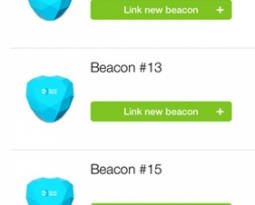The consistency principle is a powerful psychological tool and persuasion tactic that can be used to warm customers up to the idea of a sale. Once an initial sale is completed, the consistency principle has even more potential to retain that customer and encourage repeat sales. It can become a major component of marketing positioning, and it can also help lead to language and approaches that each achieve better results.
How does it work? Simple. All you have to do is reinforce the idea that the customer â whether a potential first-timer or a repeat customer â is someone who gets a unique value out of your brand. Notice that the idea is not to convince the customer that your brand offers them unique value, but rather that there is something special about the customer that makes them the perfect candidate for your product.
Many brands consider this approach mere flattery, but the consistency principle goes beyond compliments and instead taps into the ways that we, as human beings, express our identities in social settings. To illustrate further, here are the nuanced ways the consistency principle can be used in various scenarios to achieve a desired effect in your market.
The First Contact
The most direct version of the consistency principle is extremely similar to flattery. You find a positive value in your product, and assign a separate positive value to the customer that implies they can get more use out of the product than the average person.
For example, a kitesurfing brand could target a consumer through display by saying âYou crave adventure and new ways of doing things, so you will love this new kitesurfing product we just released.â Similarly, a brand aiming for value would tell a consumer that they are âsomeone who knows a good deal,â and a luxury brand would tell the consumer that they âunderstand the finer things in life.â
The way the consistency principle works is that now that person will feel like they must embody the positive traits assigned to them. For instance, someone who is told they are really good at organizing may now be more apt to organize around the office. Likewise, a consumer who is told they crave adventure may wonder what sort of adventures they can get up to. This line of thinking can often lead to a surefire sale.
The Referral
The truth is that the âassigned valueâ approach as indicated above does not always work since the consumer may feel as if they are being imposed upon or, worse, condescended to. They may sense the high-pressure tactic and shut down on the sale unless said tactic was correctly targeted or skillfully subtle.
While most marketing professionals are not about the one-time lucky sales, the consistency principle can still become their friend, especially in the eCommerce world. A simple alternative method is to incentivize the consumer to make a referral to a friend via social media or direct messaging. Before the customer even decides to purchase an item, they may go ahead with the recommendation and earn a special offer that they can now use. Loyalty program currency is an excellent reward to offer in particular since it establishes a relationship and extracts little real value from the brandâs coffers.
Not only will the customer now have a coupon or reward currency in hand to âuse or lose,â but he has also established, in a public venue, that he is the type of person that enjoys the referred companyâs products. Following the consistency principle, that person now feels partially committed to the idea of shopping since he must stand behind his word and represent the image he projects to the public.
Getting a Yes
Another use of the consistency principle is to ask questions that will lead to a âyes.â Once someone has said âyesâ to a brand, they will be more apt to follow through with more âyesâ responses down the road.
Brands often use this approach by lobbing a âsoftballâ question followed by a real conversion action. For example, they can ask: âHate filling out information forms every order?â Since no one in their right mind would say âNo,â the brand can follow up by asking in the next sentence âWould you be willing to link your Facebook account so that you can streamline the checkout process?â
Since the customer has already established that they say âyesâ to this brand and that they are the type of person that hates filling out forms, their inertia will carry them towards a desired conversion action â in this case providing the brand with more demographic data while creating a personal link that can be used later for quicker purchases.
You can use Digital Social Retailâs software product to manage these types of social interactions and rewards programs incentives all from a convenient platform. It also provides real-time data feedback to measure the effectiveness of your campaigns and individual display elements. Since you seem like the type of smart reader that can appreciate powerful yet frictionless software, you should click here to learn more. Hey, it was worth a try.










